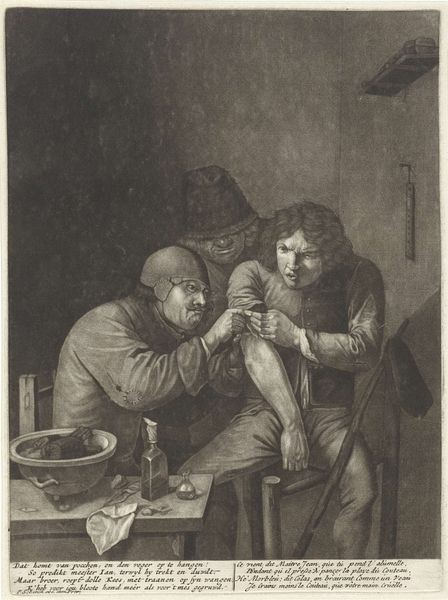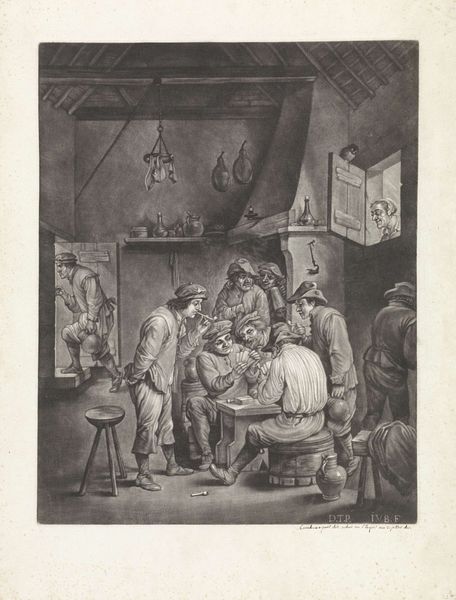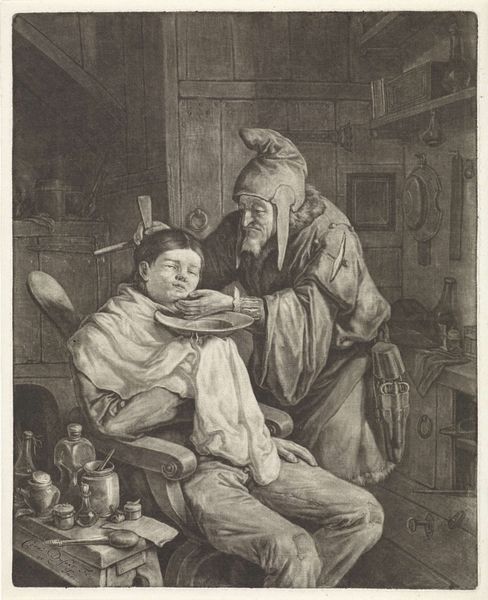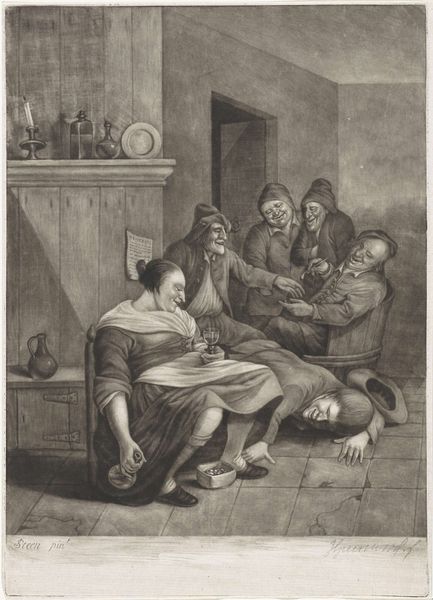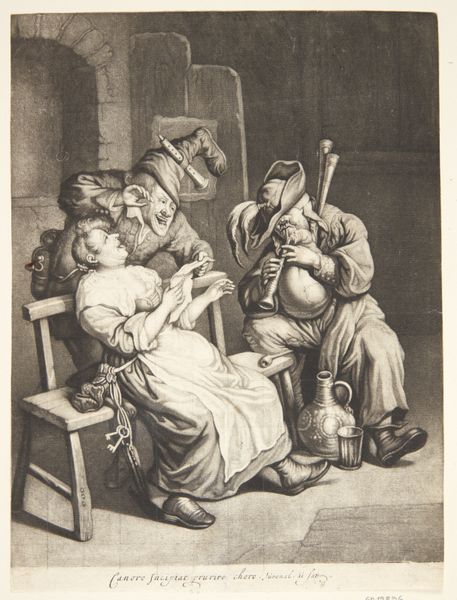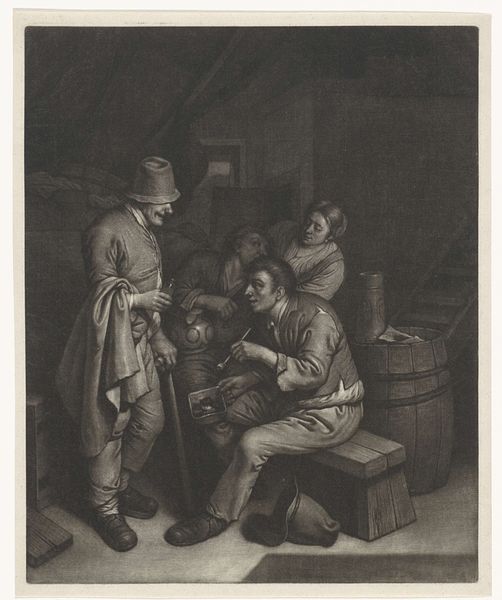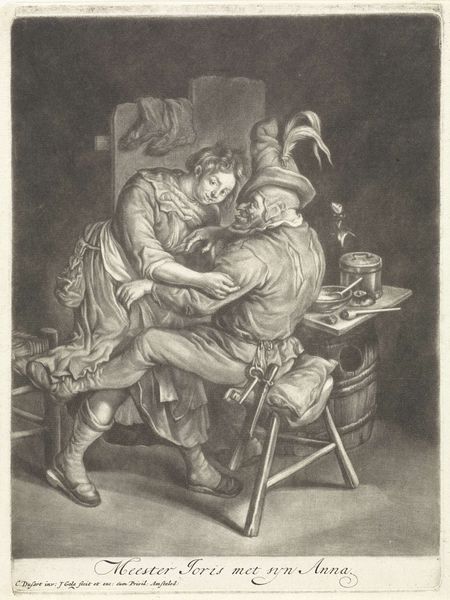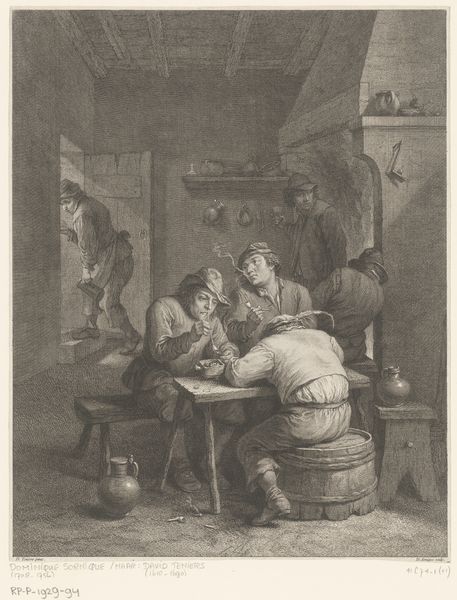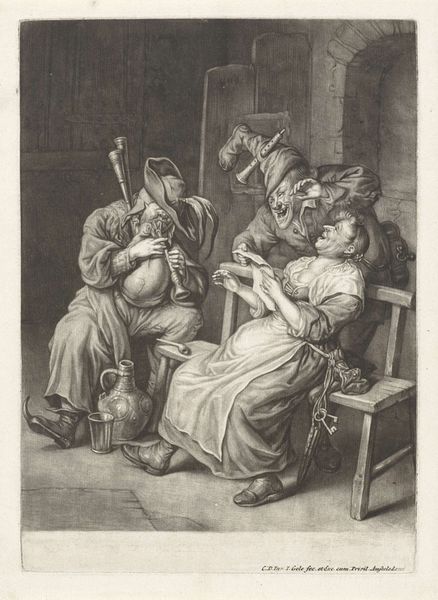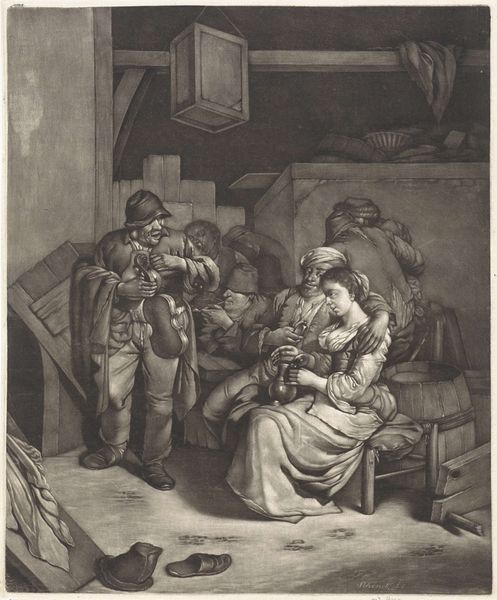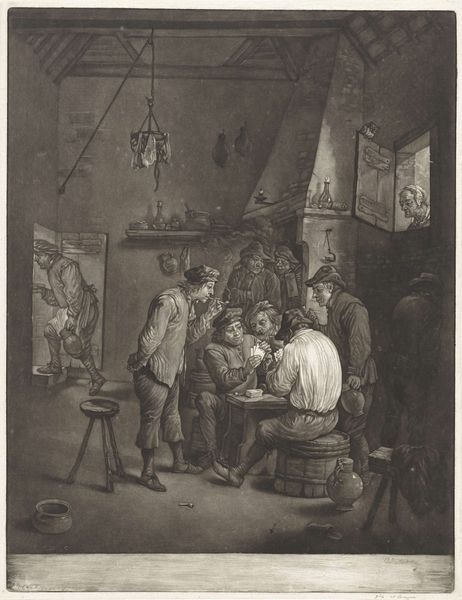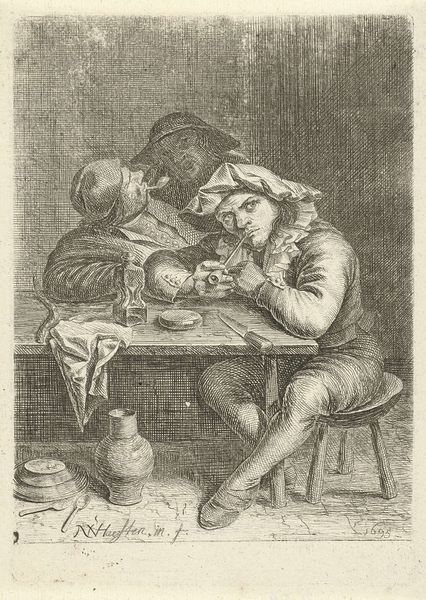
drawing, print, etching, intaglio, graphite, engraving
#
portrait
#
drawing
#
narrative-art
#
baroque
# print
#
etching
#
intaglio
#
charcoal drawing
#
graphite
#
genre-painting
#
history-painting
#
charcoal
#
graphite
#
engraving
Dimensions: height 283 mm, width 205 mm
Copyright: Rijks Museum: Open Domain
Curator: We’re looking at an etching called “Schouderoperatie,” or "Shoulder Surgery," created sometime between 1659 and 1740 by Jan van der Bruggen. Editor: Ouch, my first impression is sheer discomfort. The poor fellow looks absolutely terrified, his face contorted in pain as someone pokes around at his shoulder! There’s a strong sense of immediate violation in this scene. Curator: Indeed, but consider the symbolism. Shoulder injuries have long represented burdens carried, suggesting not just physical, but emotional or psychological trauma being addressed, albeit rather brutally. Editor: A fair point. Given the era, medical practices were definitely…primitive, often reinforcing existing power dynamics. Note the voyeuristic quality as well—the older figure lurking over the patient's shoulder; it creates a sense of exposure and vulnerability that’s hard to ignore. Who benefits from this spectacle? Curator: In historical genre scenes like these, there’s a blend of humor and morality. The operation might serve as a metaphor, not just for healing, but for the difficult process of facing one’s shortcomings. Editor: Perhaps. I’m also stuck on the gnarled lines etched to create the figure’s facial expressions. It’s not just pain; it’s fear of the unknown, the absolute lack of control so many experienced at the hands of early medical practitioners. I mean, look at the crude implements on the table! It evokes a sense of dread but also underscores the inequalities that made certain bodies more disposable. Curator: The composition definitely draws us in, and you are correct about those harsh expressions! In etching and engraving of the period, such pronounced affect was key, serving a didactic function, emphasizing human fallibility and our shared physical experience. Editor: True. I still wonder, though, whose stories are centered. Was this etching intended as social commentary, critique of the medical establishment, or something else? So many voices are absent. Curator: Considering the broad themes explored during this historical period, the image is loaded with information related to a transitional era of thinking around medicine. Thanks for offering your unique analysis of what might be symbolized here, along with your interpretation about social perspectives. Editor: Thanks! Reflecting on the role this image and similar ones play in upholding and disrupting the power structures, helps keep it relevant, beyond mere historical documentation.
Comments
No comments
Be the first to comment and join the conversation on the ultimate creative platform.
